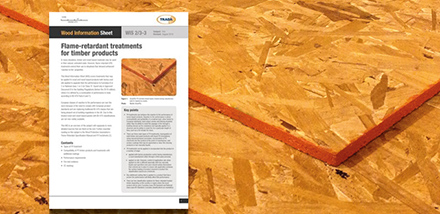
Flame-retardant treatments for timber products has undergone a major revision following changes to Building Regulations resulting from the Hackitt Review in the UK now TRADA (The Timber Research and Development Association UK) has released information to detail the changes. Source: Timberbiz
While there are many situations in which timber and wood-based materials may be used in their natural, untreated state, flame-retardant treatments may extend their use to situations that demand enhanced ‘reaction to fire’ properties.
‘Reaction to fire’ performance is about the combustibility and ignitability of a material – its contribution to fire growth, and, when tested to European standards, heat output, smoke and flaming droplets – rather than its ability to resist the passage of fire through a building.
Recent timber-related fires should reaffirm the necessity of upgrading timber components to the much higher Class B rating where possible.
Treatment, and the resulting change in ‘reaction to fire’ rating, would enable the timber –decking, cladding or other products – to perform differently when exposed to fire.
TRADA’s WIS Flame-retardant treatments for timber products has been updated to reflect the shortcomings identified in the Hackitt Review, and signpost further, comprehensive sources of information for those looking to gain confidence and technical understanding in this area.
Contents:
- Types of FR treatment
- Compatability of FR timber products and treatments with additional coatings
- Performance requirements
- Fire test evidence
- CE marking.
Major changes
- Class 0, which is found only in Approved Document B to the Building Regulations (before the 2019 edition)
- European classes of reaction to fire performance are now the norm because of the need to comply with European product standards
- Updates to the three types of FR treatments
- Updates to treatments applied on site
- Tables 1 and 2
- UK Building Regulations
- Durability of reaction to fire
- The addition of two new standards for common wood-based products.







